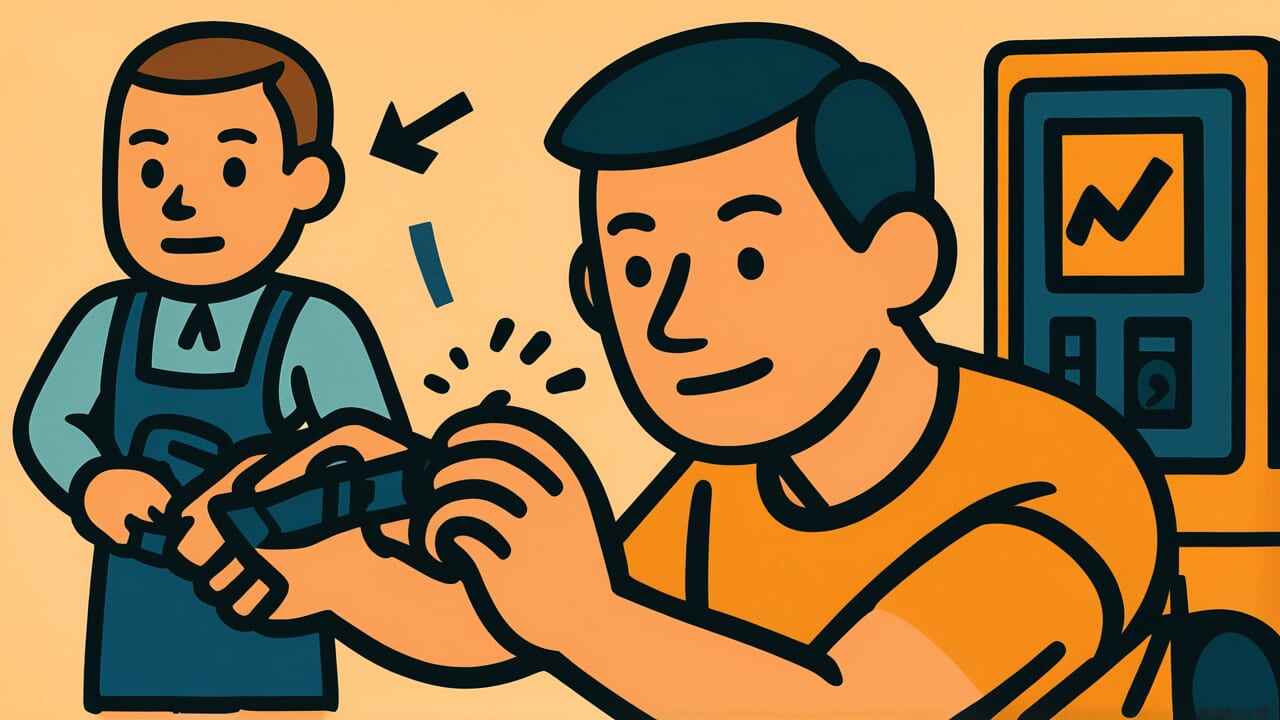How to Read “there is nothing more permanent than a temporary solution”
There is nothing more permanent than a temporary solution
[THAIR iz NUHTH-ing mawr PUR-muh-nuhnt than uh TEM-puh-rer-ee suh-LOO-shuhn]
Meaning of “there is nothing more permanent than a temporary solution”
Simply put, this proverb means that quick fixes often end up lasting much longer than anyone planned.
When we face a problem, we sometimes create a fast solution. We tell ourselves it’s just temporary until we find something better. The proverb points out something funny about human nature. These quick fixes have a way of sticking around forever. What starts as a band-aid becomes the permanent answer.
This happens everywhere in daily life. Someone puts up a temporary fence that stays for years. A company creates a quick software patch that never gets properly fixed. A family uses a folding table for dinner that becomes their permanent dining setup. The temporary solution works well enough that nobody bothers to replace it.
The wisdom reveals something interesting about how we solve problems. We often underestimate how much effort real solutions require. The temporary fix does the job, so we move on to other things. Before we know it, months or years have passed. The temporary solution has become so normal that changing it feels unnecessary.
Origin and Etymology
The exact origin of this proverb is unknown, though it reflects modern organizational thinking. It likely emerged in the business world during the mid-20th century. The saying captures frustrations that became common in rapidly growing companies and institutions.
This type of wisdom developed as organizations became more complex. Quick decisions were often needed to keep things running smoothly. Managers and workers noticed a pattern where emergency fixes outlasted their intended purpose. The temporary became permanent through neglect rather than design.
The proverb spread through workplace culture and eventually entered everyday language. It resonated with people because they recognized the pattern in their own lives. The saying gained popularity as technology advanced and change happened faster. People needed words to describe why their quick fixes kept becoming permanent features.
Interesting Facts
The word “temporary” comes from Latin “temporarius,” meaning “of time” or “lasting for a time.” The contrast between “temporary” and “permanent” creates irony that makes this proverb memorable. This saying often appears in engineering and business contexts, where quick fixes are common but proper solutions require significant resources.
Usage Examples
- IT Manager to colleague: “We patched that server issue with a workaround six months ago and never fixed the root cause – there is nothing more permanent than a temporary solution.”
- Homeowner to spouse: “That cardboard we taped over the broken window is still there after two years – there is nothing more permanent than a temporary solution.”
Universal Wisdom
This proverb reveals a fundamental truth about human psychology and the nature of change. We consistently underestimate the effort required for permanent solutions while overestimating our future motivation to revisit problems. Once a temporary fix removes immediate pain, our urgency disappears, and other priorities take over.
The wisdom exposes our relationship with “good enough.” Humans are naturally efficient creatures who conserve energy for survival. When something works adequately, our brains signal that the problem is solved. We move attention to more pressing concerns. This served our ancestors well when resources were scarce and immediate threats demanded focus. However, in complex modern systems, this tendency creates long-term complications.
The proverb also highlights how we deceive ourselves about future behavior. We genuinely believe we’ll return to fix things properly later. This optimism about our future selves allows us to make peace with temporary measures. Yet we rarely account for how quickly we adapt to new normal conditions. What feels temporary today becomes invisible background tomorrow. The temporary solution succeeds so well at removing our discomfort that we forget why we needed a better answer.
When AI Hears This
Temporary solutions behave like living creatures fighting for survival. They quickly grow roots into existing systems and processes. People learn to work around them, creating new habits and routines. These fixes start producing unexpected benefits that nobody planned for. Soon, removing the temporary solution would disrupt more things than keeping it. The quick fix has successfully made itself essential to daily operations.
Humans unknowingly become partners in this survival process. We invest time learning how the temporary system works. We build other processes that depend on it staying in place. Our brains start seeing the workaround as normal rather than broken. This partnership happens without anyone making a conscious choice about it. We become the temporary solution’s best allies without realizing it.
This reveals something beautiful about human adaptability and cooperation. We instinctively help struggling systems find stability and purpose. Even our “lazy” shortcuts show remarkable creativity and resourcefulness. Temporary solutions succeed because humans are naturally collaborative, even with imperfect systems. What looks like poor planning is actually our gift for making things work.
Lessons for Today
Understanding this pattern helps us make better decisions about when to accept temporary solutions. Sometimes quick fixes are exactly what we need, especially during emergencies or when testing new approaches. The key is being honest about whether we’ll actually return to improve things later. Most of the time, we won’t.
This awareness changes how we evaluate solutions. Instead of asking “Will this work for now?” we might ask “Can I live with this permanently?” If the answer is yes, the temporary solution might be perfect. If not, it’s worth investing more effort upfront. Recognizing our tendency to stick with good enough helps us choose our battles wisely.
The wisdom also applies to relationships and personal habits. Quick compromises in how we communicate or temporary changes to our routines often become permanent patterns. Understanding this helps us pay attention to what we’re actually creating, not just what we intend. When we embrace temporary solutions consciously rather than accidentally, we can use this human tendency to our advantage instead of being surprised by it.



Comments